Oconahua is a village hidden away at the western edge of the state of Jalisco. Most of its inhabitants are indigenous people, and Oconahua’s fine tortillas are much appreciated in the region.
Politically, Oconahua might appear to have little importance in modern times, but this was not always the case, say locals. As proof, they’ve always pointed to ruins occupying a big section of the town. “This,” they would say, “is the location of the Palacio de Ocomo [Ocomo Palace].”
When archaeologist Phil Weigand was shown the site in 1958, he was greatly surprised. It appeared to be the remains of a building of monumental proportions, measuring 125 by 125 meters. This ancient building had obviously held great importance for the townspeople, who had been careful never to construct anything on top of it. But what was it?
Weigand speculated that the Palacio de Ocomo might have been a tecpan, a U-shaped building of monumental proportions similar to the Palace of Montezuma buried beneath Mexico City’s zócalo. The Montezuma one was only slightly larger.

But all this was pure conjecture. Only by excavating the site could it be determined exactly what lay beneath the surface and what role it played in western Mexico and in local people’s lives.
Digging began in 2009 and is presently in the hands of archaeologists Sean Montgomery Smith Márquez and Samuel Mateo Guadarrama.
“We are now sure that what we have here in Oconahua is clearly part of what we call the Grillo Complex, which covers the period from A.D. 450 to 900 in this part of western Mexico,” Smith told me. “But there was an intermediate period around A.D. 600 [when] the palace was made much bigger. We need to excavate some other spots to get a better idea just what happened around 600.”
“What we have found here in Oconahua,” he added, “is, first of all, the palace, which is enormous and had a great many functions. Then we have what we are calling Residential Unit Number 1, which consists of three buildings around a patio.
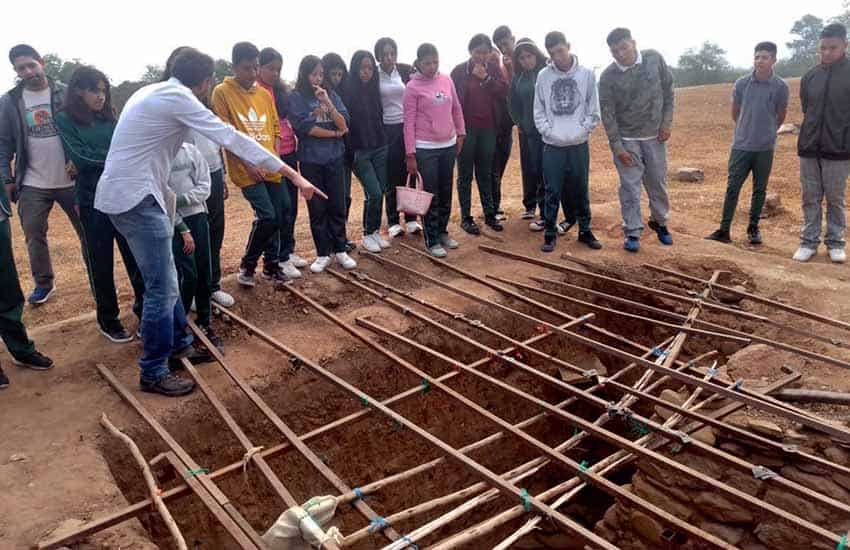
“Studies carried out by the late Michelle Hernández show that this place was a neighborhood center. All this is surrounded by many small dwellings. So the whole place was well-organized, with a main structure, secondary structures and then outlying houses where most people lived.”
After describing the ruins at Oconahua, Smith related the fascinating story of how the people living there today are discovering a direct connection to their ancestors.
“We must not forget,” he says, “that this archaeological site was once inhabited by people. It was people who put those building blocks in place. There were rituals taking place here. There were songs, and there were dances.”
The plazas at Oconahua were designed to hold large numbers of people who gathered together principally for banquets and dances. Since the modern population of Oconahua continues to dance, a project was launched for the purpose of examining the connection between the traditional Oconahua dances of today and the rituals that must have taken place at the Palacio de Ocomo.

“This kind of project is called community archaeology, and a group of 15 people worked on it, including archaeologists, townspeople and municipal officials,” Smith told me. “It wasn’t something cooked up by us archaeologists, but it was a project of all of us together.”
The group posed questions, did research, made hypotheses and came up with a thesis.
“Together we were able to see the connection between the Oconahua dance and the rituals that must have taken place at the Palacio de Ocomo,” Smith said.
One result of this was the creation of a museum, which was inaugurated on May 22.
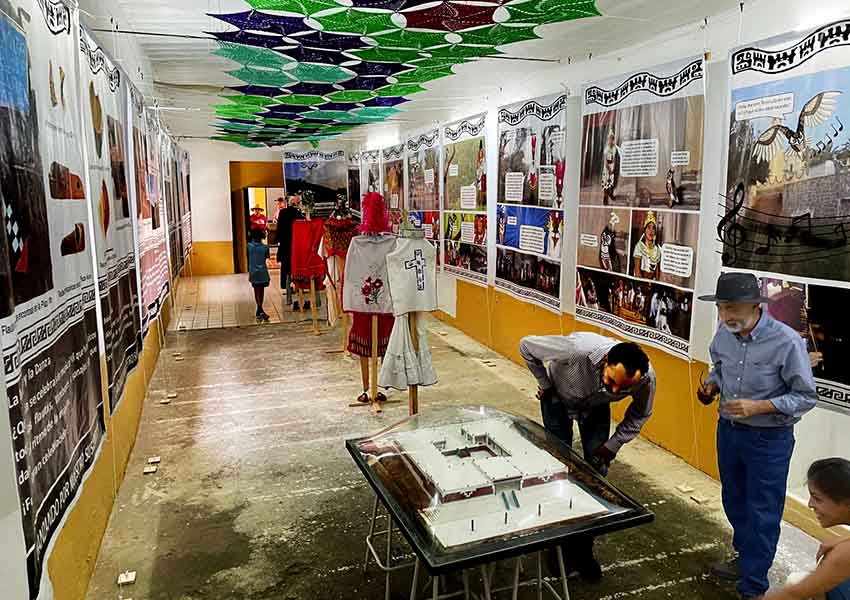
“This is not a museum housing archaeological pieces,” Smith points out. “It’s a presentation that we archaeologists created together with the Oconahua dancers: a link between the past and the present.”
This is a museum that focuses on culture rather than objects. Its theme is announced at the entrance to the building: danzando por nuestro sustento (dancing for our well-being).
The museum’s purpose is to teach the community, and especially the local youth, about the link between the people who built and used the Palacio de Ocomo over 1,000 years ago and the people who live in Oconahua today.
The museum is long and narrow with giant “posters” covering the walls. Down the center are the costumes worn by the dancers to represent the protagonists of the drama. These protagonists include:
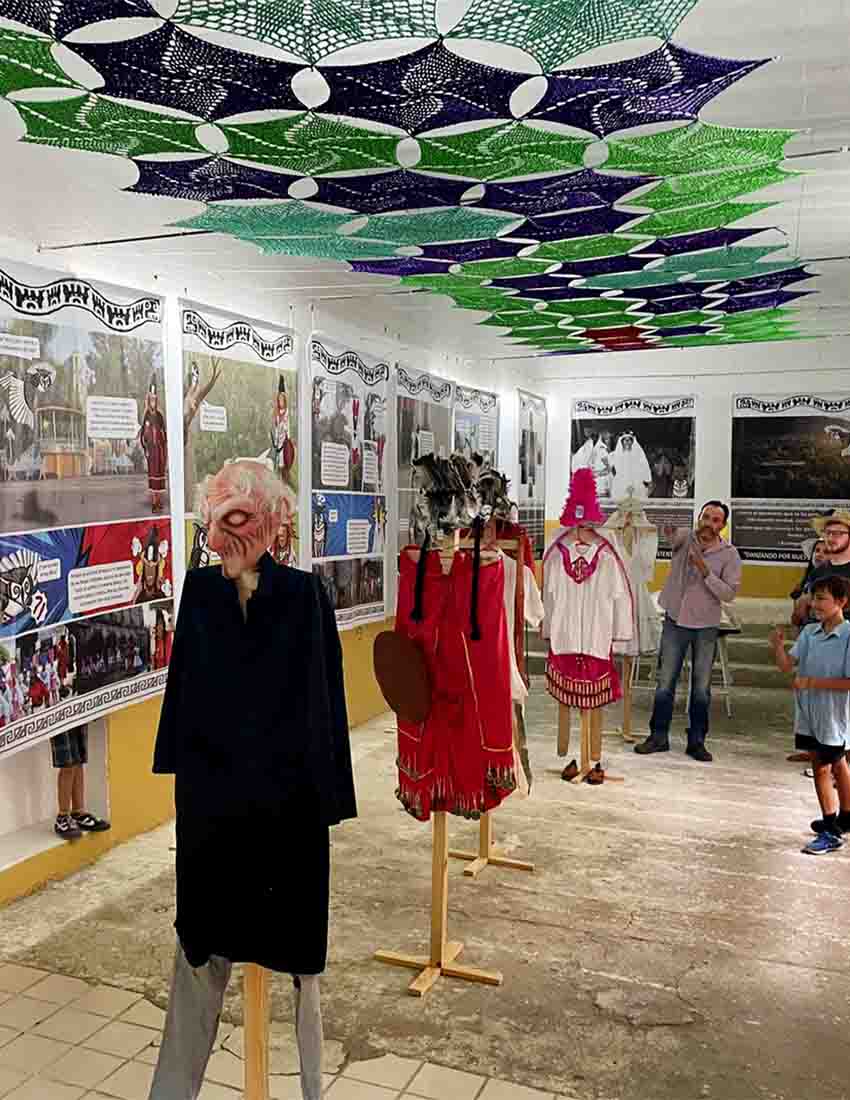
- La Malinche (Hernán Cortés’ interpreter)
- La Mula (The Mule)
- Los Nahuales (shapeshifters) or Los Viejos (old men)
- La Meca and El Meco (hunters trying to catch The Mule)
- Los Capitanos (The Captains, one wearing blue and one wearing pink. They protect La Malinche)
The “posters” hanging on the walls use comic book art techniques to talk about these characters and how they interact. For this story, the team invented a guide: El Teco — a wise, immortal owl that can move forward and backward in time. He narrates the story.
”Over the years,” said Smith, “the details of these ritual dances were being forgotten by the younger generation, and this museum will remedy this. It will restore communication among the grandparents, parents and children and thus restore oral tradition.“
Smith points out that this type of museum can communicate ideas without a great deal of expense. The posters are mobile and could easily be put on display at the cultural centers of nearby communities.
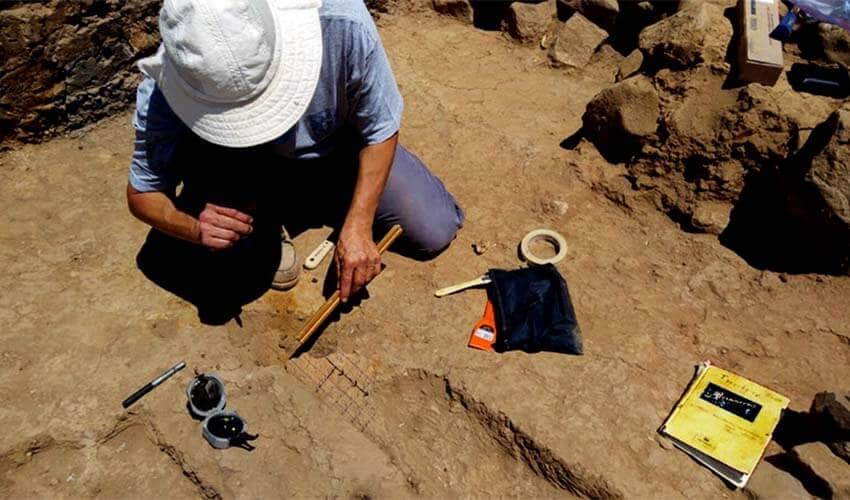
“This type of project is not unique,” he says. “It’s been done in Oaxaca and, in fact, in other countries, such as Brazil, Egypt, England and Australia.”
School groups have already begun to visit the museum.
“Today we had 110 kids in here,” Smith said. “All around the region, they are learning what these Oconahua dances are all about. And the kids come in and they will say, ‘I saw this dance before, but I never knew what this or that character was all about.’ So now it’s the Oconahua kids who are explaining the details to the other ones.”
On occasion, I have watched indigenous ritual dances, and I am always struck by the seriousness and precision of the dancers. What I didn’t realize was that they were telling a story and that the story itself was representative of deeper themes.
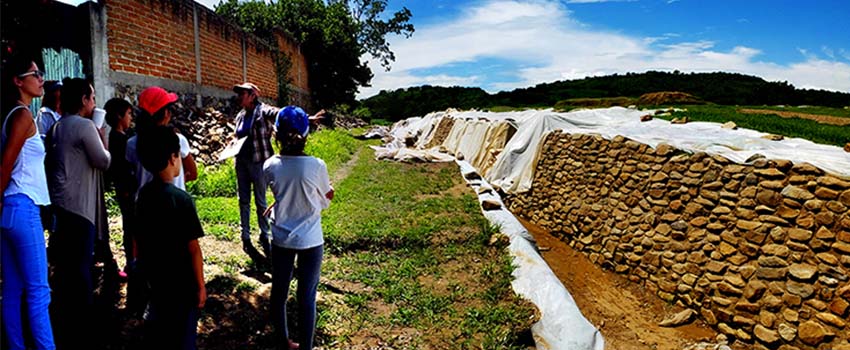
Thanks to the Community Museum of Oconahua (and to Teco the Owl’s explanations), I see that the dance is much more than a dance. It is theater. It is part and parcel of humanity’s grand tradition of storytelling, of ballet, of opera, of the Passion Play.
Costumes, dancing and music are combined to tell a story that can be appreciated at a distance by huge crowds of people. It is a visual, physical reinforcement and a complement of oral tradition.
“Oconahua has a history over 2,000 years old,” Smith said. “This pueblo is a cultural paradise.”
The writer has lived near Guadalajara, Jalisco, since 1985. His most recent book is Outdoors in Western Mexico, Volume Three. More of his writing can be found on his blog.
